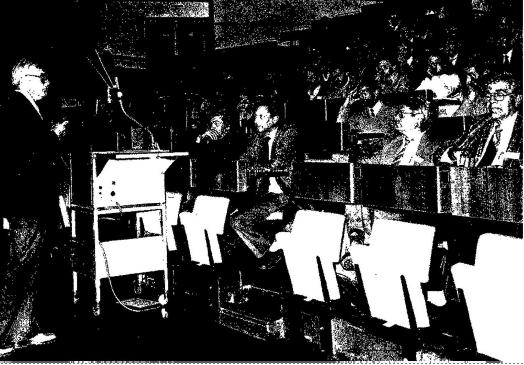The first course of the newly created CERN Accelerator School under the leadership of Kjell Johnsen was held at CERN from 11-21 October. Its subject, 'Antiprotons for Colliding Beam Facilities', was selected obviously in the light of the recent spectacular achievements in this field. The School will be back-tracking in its next planned course in September 1984 with a basic course on accelerator physics accessible to post-university science and engineering students. The School has several aims in the general context of broadening the base of accelerator physics knowledge in Europe. There is need to attract young people into this field, particularly with the tremendous challenge of mastering new acceleration techniques so as to be able to continue the advance of high energy physics into the next century. In addition, accelerator physics has increasing application in other fields (for example the uses of synchrotron radiation sources and spallation neutron sources in a wide variety of research, plus all the potential applications in medicine, inertial fusion, radio-isotope dating etc.). It is one of the responsibilities of the established accelerator centres to ensure a thriving community of accelerator experts to respond to all these needs in the future.
The first schools of this type took place in 1976 at Erice, led by Kjell Johnsen and later in the USA at Fermilab, Stanford and Brookhaven led by Mel Month. The CERN Accelerator School series got off to a flying start with the antiproton course which was excellently organised, particularly by Phil Bryant. There were over a hundred participants, including some from the USA. All the lectures were exceptionally well prepared and covered their topics from the basic ideas to the present frontier of our understanding.

Simon van der Meer who conceived the stochastic cooling technique even pushed that frontier further out when he presented some new approaches during the discussion session on stochastic cooling which he chaired. There were also new ideas presented about the possibilities of cooling very high energy beams (such as the stored beams of around 300 Ge V in the SPS) which was considered as an intractable problem until recently. There was also the first presentation by Bruno Autin of the complete antiproton collector, ACOL, proposal which has just been published. This is designed to step up the CERN proton-antiproton collider luminosity significantly. Many other topics deserve mention, such as the report by John Peoples, an invited speaker, on the Fermilab Tevatron project which will eventually overtake the abilities of the CERN collider, the resurgence of physics with gas jet targets, other potential applications of cooling techniques in heavy ion machines, free electron laser systems etc. . .. but with this issue following close on the heels of our special issue on the W, Z discoveries last month we are wary of irradiating readers with too high a flux of antiprotons. The significant news is that the CERN Accelerator School is off to a very healthy start which bodes well for the realisation of its aims over the years to come.
Article originally published on the CERN Courier, 1983

